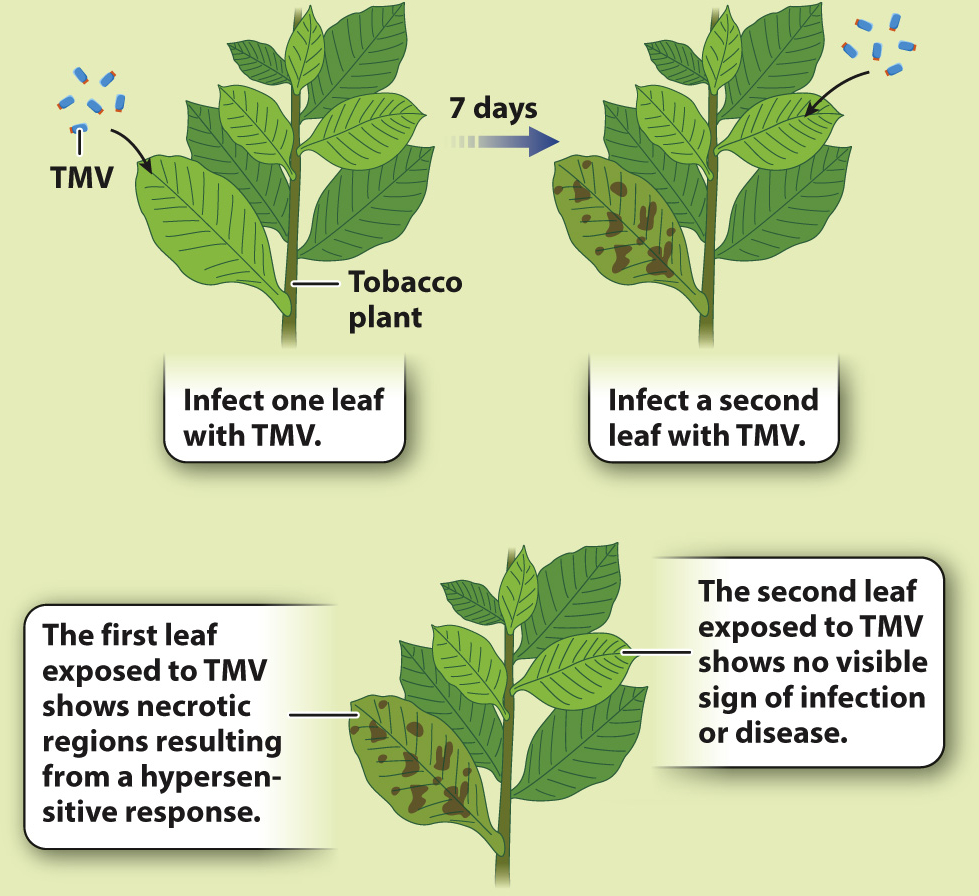HOW DO WE KNOW?
FIG. 32.7
Can plants develop immunity to specific pathogens?
BACKGROUND Tobacco is susceptible to an infectious disease that causes its leaves to turn a mottled yellow, hence the name of the disease—
HYPOTHESIS Plants that survive infection with tobacco mosaic virus (TMV) have acquired immunity and therefore resist further attack.
EXPERIMENT American plant pathologist A. F. Ross infected one leaf on a tobacco plant with TMV. One week later, he exposed another leaf on the same plant to the virus.
RESULTS Plants that had been previously exposed to TMV showed no signs of infection when exposed to the virus a second time.

CONCLUSION Tobacco leaves that have never been exposed to TMV can acquire resistance to the pathogen if another leaf on the same plant has been previously exposed. This result indicates that a signal has been transmitted from the originally infected leaf to the undamaged parts of the plant, and that the transmitted signal subsequently triggers the development of an immune response that protects the plant from further infection.
FOLLOW-
SOURCE Ross, A. F. 1961. “Systemic Acquired Resistance Induced by Localized Virus Infections in Plants.” Virology 14:340–